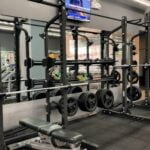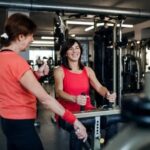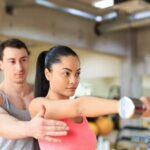Dressage fitness exercises are essential for riders looking to enhance their performance in this demanding equestrian discipline. Understanding the importance of physical fitness in dressage goes beyond just riding skills – it can greatly impact your overall effectiveness as a rider. By incorporating targeted fitness exercises into your routine, you can improve your strength, endurance, balance, and flexibility, all of which are crucial for successful dressage riding.
One of the key benefits of incorporating fitness exercises into your dressage routine is the improvement in overall performance and communication with your horse. A strong and fit body allows for better posture, alignment, and aids in executing precise movements required in dressage. Additionally, improved fitness can translate to enhanced stamina during long training sessions or competitions, ultimately leading to better results in the arena.
Setting specific fitness goals tailored to dressage riders is vital for progress and growth. Whether it’s increasing cardiovascular endurance for those extended trot sets or building core strength for more effective half-passes, having clear objectives will help guide your training program. By focusing on areas such as cardiovascular health, strength training, flexibility, and even cross-training activities, riders can achieve a well-rounded approach to improving their physical condition specifically tailored to the demands of dressage.
Benefits of Incorporating Fitness Exercises Into Your Dressage Routine
Improved Rider Performance
Incorporating fitness exercises into your dressage routine can significantly enhance your overall performance as a rider. By improving your cardiovascular endurance, strength, and flexibility, you can better withstand the physical demands of riding and execute movements with greater precision and finesse. Building a strong foundation through fitness will also help you maintain proper posture and alignment in the saddle, ultimately translating to improved communication with your horse.
Enhanced Horse-Rider Connection
Fitness exercises not only benefit the rider but also contribute to strengthening the bond between horse and rider. A fit and balanced rider is better able to move in harmony with their horse, making it easier for them to communicate effectively through subtle cues. Increased stability and balance from strength training exercises can help riders maintain a consistent connection with their horse’s movements, leading to improved performance in dressage maneuvers.
Preventative Health Benefits
Engaging in dressage fitness exercises can also bring about various preventative health benefits for riders. By prioritizing cardiovascular workouts, strength training, and flexibility exercises, you can reduce the risk of injury both in and out of the saddle.
These exercises promote muscle development, joint stability, and overall body awareness, which are essential for longevity in the sport of dressage. Additionally, a well-rounded fitness routine can aid in maintaining proper weight management and promoting overall well-being for riders both physically and mentally.
Setting Specific Fitness Goals for Dressage Riders
When it comes to dressage, having specific fitness goals can greatly benefit riders in improving their performance in the saddle. One key aspect of setting fitness goals is to focus on areas that directly impact your riding abilities. For dressage riders, this may include goals related to core strength, balance, flexibility, and cardiovascular endurance. By identifying these target areas, riders can tailor their fitness exercises to address their specific needs and enhance their overall performance.
A common goal for dressage riders is to improve core strength, as a strong core is essential for maintaining proper posture and stability while riding. Incorporating exercises such as planks, Russian twists, and leg lifts can help strengthen the muscles in the core area, leading to better overall control and balance in the saddle.
Additionally, setting goals to increase flexibility through stretches and yoga poses can help riders achieve a greater range of motion and prevent injuries during training or competition.
Another important aspect of setting fitness goals for dressage riders is establishing markers for progress and improvement. This may involve tracking metrics such as endurance levels during cardio workouts, weight lifting capacities during strength training sessions, or measuring flexibility gains over time. By monitoring these key indicators, riders can stay motivated and focused on reaching their fitness goals while also celebrating milestones along the way.
In order to achieve peak performance in dressage, it is crucial for riders to set specific fitness goals that align with their riding aspirations. Whether aiming to improve balance, enhance stability, increase endurance, or boost flexibility, incorporating targeted dressage fitness exercises into your routine can make a significant difference in your overall riding abilities.
By setting clear objectives and tracking progress towards these goals, dressage riders can take a proactive approach towards enhancing their physical conditioning for maximum success in the arena.
| Specific Fitness Goals | Importance |
|---|---|
| Core Strength | Essential for stability and posture while riding |
| Flexibility | Prevents injuries and improves range of motion |
| Progress Tracking | Motivates riders and allows them to celebrate achievements |
Cardiovascular Exercises for Improving Endurance and Stamina in the Saddle
Cardiovascular fitness is a crucial component of overall physical fitness for dressage riders. The demands of riding horses in dressage require riders to have good cardiovascular endurance and stamina to maintain proper posture, control, and communication with the horse throughout the training session or competition. Cardiovascular exercises aim to improve the efficiency of the heart and lungs, enabling riders to sustain physical exertion for longer periods without experiencing fatigue.
Benefits of Cardiovascular Exercises
Incorporating cardiovascular exercises into a dressage rider’s fitness routine offers numerous benefits. Improved cardiovascular endurance can enhance a rider’s ability to maintain correct body position and aids in keeping their balance during complex movements such as lateral work or flying changes. Additionally, increased stamina enables riders to focus on precise aids and communication with their equine partner without tiring quickly, ultimately leading to better performance in the show ring.
Examples of Cardiovascular Exercises
There are various cardiovascular exercises that dressage riders can integrate into their training regimen to boost endurance and stamina. Activities such as running, cycling, swimming, or high-intensity interval training (HIIT) are effective in improving cardiovascular fitness.
Riding can also be considered a cardio workout when done at higher intensities like trot sets or canter work. By incorporating these exercises regularly, riders can enhance their overall physical conditioning, allowing them to ride more effectively and comfortably for extended periods during training sessions or competitions involving intricate movements required in dressage routines.
Strength Training Exercises to Enhance Stability and Balance While Riding
When it comes to dressage, stability and balance are key components that can make a huge difference in the rider’s performance. Incorporating specific strength training exercises into your routine can help improve these aspects and ultimately enhance your overall riding experience. Here are some exercises that target different muscle groups to aid in stability and balance:
- Planks: This classic exercise is excellent for strengthening the core muscles, which are crucial for maintaining proper posture while riding. Aim to hold a plank position for at least 30 seconds to start, gradually increasing the time as you build strength.
- Squats: Squats work the lower body muscles, including the quads, hamstrings, and glutes. Having strong legs is essential for staying grounded in the saddle and maintaining a solid seat. Start with bodyweight squats and then progress to using weights for added resistance.
- Single-leg deadlifts: This exercise targets the stabilizing muscles in the legs and core. By working unilaterally, you can improve balance on each side of your body independently. Focus on keeping your back straight and hinging at the hips while performing this movement.
By incorporating these strength training exercises into your regular routine, you can expect to see improvements in your stability and balance while riding. Consistency is key when it comes to building strength, so aim to perform these exercises at least a few times a week to reap the benefits. Remember that having a strong foundation will not only benefit your performance in dressage but also reduce the risk of injuries.
In addition to these targeted strength training exercises, don’t forget about overall conditioning through cardiovascular workouts and flexibility routines. A well-rounded fitness regimen that includes all three components – strength, cardio, and flexibility – will help you achieve peak performance in dressage. Stay dedicated to your dressage fitness exercises, set specific goals, and watch as your riding skills improve over time.
Flexibility Exercises for Increasing Range of Motion and Preventing Injuries
Flexibility is a key component of dressage fitness exercises, as it plays a crucial role in increasing the range of motion and preventing injuries. Incorporating flexibility exercises into your routine can help improve your overall performance in the saddle by allowing for better alignment and movement. By focusing on stretching and mobility work, dressage riders can enhance their ability to execute movements with precision and fluidity.
One popular flexibility exercise for dressage riders is yoga. Yoga not only helps improve flexibility but also enhances core strength, balance, and mental focus – all important aspects of successful dressage riding.
Poses such as downward dog, warrior I and II, and pigeon pose can target specific muscle groups used in riding, such as the hips, thighs, and back. Regular yoga practice can not only increase flexibility but also promote relaxation and reduce stress levels, which are essential for optimal performance in the ring.
In addition to yoga, dynamic stretching exercises are beneficial for dressage riders looking to improve their range of motion. Dynamic stretches involve moving parts of your body actively through a full range of motion to increase blood flow to muscles and prepare them for movement.
Leg swings, arm circles, hip rotations, and trunk twists are examples of dynamic stretches that can be incorporated into a warm-up routine before riding or working out. These exercises help loosen up tight muscles and joints while improving overall mobility for better rideability in the arena.
| Dressage Flexibility Exercises | Benefits |
|---|---|
| Yoga | Enhances flexibility, core strength, balance, mental focus; reduces stress |
| Dynamic Stretching | Improves range of motion; prepares muscles for movement; increases blood flow |
Cross-Training Activities to Complement Dressage Fitness Exercises
When it comes to excelling in dressage, it is crucial for riders to not only focus on specific dressage fitness exercises but also incorporate cross-training activities into their routine. Cross-training refers to engaging in a variety of different exercises and activities that target different muscle groups and movement patterns. By diversifying your training routine, you can prevent overuse injuries, improve overall fitness, and enhance your performance in the saddle.
Here are some cross-training activities that can complement your dressage fitness exercises:
- Yoga: Practicing yoga can help improve flexibility, balance, and core strength – all essential components for effective dressage riding. Poses such as downward dog, warrior poses, and tree pose can aid in enhancing body awareness and alignment.
- Swimming: Swimming is an excellent low-impact cardiovascular exercise that can help improve endurance and stamina without putting extra stress on your joints. It also engages the whole body, helping to strengthen muscles that are used during riding.
- Pilates: Pilates focuses on strengthening the core muscles while also addressing postural alignment and stability. By incorporating Pilates into your routine, you can develop a strong foundation for better riding posture and control.
By including these cross-training activities alongside your dressage fitness exercises, you can create a well-rounded workout regimen that targets various aspects of physical fitness essential for successful dressage riding. Remember to listen to your body and adjust the intensity of each activity based on your current fitness level.
Consistent practice of both dressage-specific exercises and cross-training activities will not only enhance your performance in the saddle but also reduce the risk of injuries associated with repetitive movements.
Recovery and Rest
While focusing on cardiovascular workouts, strength training, and flexibility exercises is crucial for improving performance in dressage, many riders overlook the importance of recovery and rest in their fitness routine. In the high-intensity world of equestrian sports like dressage, adequate rest periods are essential for allowing the body to recover and adapt to the physical demands placed on it. Without proper rest, riders may experience burnout, fatigue, and increased risk of injury.
One key aspect of recovery that dressage riders should pay attention to is sleep quality and quantity. During deep sleep cycles, our bodies repair muscle tissue, regulate hormones, and restore energy levels. Aim for 7-9 hours of quality sleep each night to facilitate optimal recovery from intense training sessions. Additionally, incorporating relaxation techniques such as yoga or meditation into your routine can help reduce stress levels and promote better sleep quality.
Another important component of recovery in dressage fitness is nutrition. Fueling your body with the right nutrients before and after workouts can enhance muscle recovery and replenish glycogen stores used during exercise. Make sure to consume an adequate amount of protein for muscle repair, carbohydrates for energy replenishment, and healthy fats for overall health.
Hydration is also crucial for maintaining performance levels and promoting recovery. Remember to drink plenty of water throughout the day to stay hydrated both in and out of the saddle. By prioritizing rest, sleep, nutrition, and hydration alongside your dressage fitness exercises, you can achieve peak performance while minimizing the risk of burnout or injury.
Conclusion
In conclusion, incorporating fitness exercises into your dressage routine is essential for achieving peak performance in the sport. By focusing on cardiovascular, strength, flexibility, and cross-training activities, riders can improve their endurance, stability, balance, range of motion, and overall physical conditioning. Setting specific goals tailored to individual needs and consistently working towards them will help riders progress in their fitness journey and enhance their performance in the saddle.
Moreover, recovery and rest play a crucial role in the holistic approach to dressage fitness. Allowing the body to recover and recharge between workouts is just as important as the exercises themselves. Proper rest ensures that muscles have time to repair and grow stronger, reducing the risk of injuries and improving overall performance. Riders should prioritize a balanced approach to training that includes adequate rest periods to optimize their results.
Frequently Asked Questions
How Do I Get Fit for Dressage?
Getting fit for dressage involves a balanced approach that includes not only riding but also off-horse exercises such as strength training, flexibility work, and cardio to improve overall fitness. Core strength is especially important in dressage to maintain proper posture and aid in communication with the horse.
What Is the Best Exercise for Equestrians?
The best exercise for equestrians is one that targets the specific muscle groups used in riding, such as core, legs, and back muscles. Pilates and yoga are excellent choices as they focus on balance, flexibility, and strengthening these key muscle groups important for maintaining proper position and aids while riding.
Why Do Dressage Riders Lean Back?
Dressage riders may lean back at times to effectively communicate with their horse through their seat aids. Leaning back can help shift the rider’s weight further onto the horse’s hindquarters, encouraging engagement of the hind end which is crucial for executing movements like collection and extensions.
This subtle shift in weight can convey different cues to the horse during intricate movements in dressage.

Passionate about providing useful information to anyone with an interest in the field of Personal Training, I strive to pass on to our readers quality information and to answer any questions about Personal Trainers, the work they do and how to become one.





